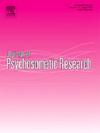SLE患者的孤独和抑郁:巴西样本的横断面研究
IF 3.3
2区 医学
Q2 PSYCHIATRY
引用次数: 0
摘要
目的慢性疾病患者存在孤独感风险,孤独感可能影响其临床状态。本研究旨在评估系统性红斑狼疮(SLE)患者与对照组相比是否存在孤独感,并研究其与抑郁、疾病活动性、疾病累积损伤、临床和流行病学变量的可能关联。方法109例SLE患者和92例对照者填写了以下量表:CES-D(流行病学研究中心抑郁量表)、UCLA- br -(加州大学洛杉矶分校巴西版)孤独感量表)、SLEDAI (SLE疾病活动性指数)和SLICC/ACR DI(系统性狼疮国际合作诊所/美国风湿病学会损伤指数)以及临床和流行病学变量。结果ssle患者比对照组有更多的抑郁症状(p = 0.0001),但他们的UCLA BR评分具有可比性(p = 0.14)。患者和对照组的抑郁与孤独感相关(r分别为0.71和0.60,p < 0.0001)。孤独感、疾病活动性(p = 0.63)、SLICC/ACR DI (p = 0.31)和疾病持续时间(p = 0.36)之间没有关联。对家庭关系认知较差的SLE患者表现出更多的孤独感(p = 0.0008)。结论SLE患者的孤独感水平与对照组相当。在这两组中,孤独与抑郁相关。在SLE患者中,没有发现孤独感与疾病活动性、累积器官损伤或临床变量之间的关联。本文章由计算机程序翻译,如有差异,请以英文原文为准。
Loneliness and depression in SLE patients: A cross-sectional study in a Brazilian sample
Objective
Patients with chronic diseases are at risk for loneliness which may affect their clinical condition. This study aimed to assess the presence of loneliness in patients with Systemic Lupus Erythematosus (SLE) in comparison to controls and to examine its possible association with depression, disease activity, disease cumulative damage, clinical and epidemiological variables.
Methods
One hundred and nine SLE patients and 92 controls answered the following scales: CES-D (Center for Epidemiological Studies depression scale), UCLA-BR – [Brazilian version of UCLA (University of California, Los Angeles) Loneliness Scale], SLEDAI (SLE disease activity index) and SLICC/ACR DI (Systemic Lupus International Collaborating Clinics/American College of Rheumatology Damage Index), along with clinical and epidemiological variables.
Results
SLE patients had more depressive symptoms than controls (p = 0.0001), however their scores on the UCLA BR were comparable (p = 0.14). Depression correlated with loneliness in both patients and controls (r = 0.71 and 0.60 respectively with p < 0.0001). No associations were found between loneliness, disease activity (p = 0.63), SLICC/ACR DI (p = 0.31), and disease duration (p = 0.36). SLE patients with worse perceptions of family relationships exhibited increased loneliness (p = 0.0008).
Conclusion
The levels of loneliness in SLE patients are comparable to the controls. In these two groups, loneliness was correlated with depression. No association was found between loneliness and disease activity, cumulative organ damage, or clinical variables in the patients with SLE.
求助全文
通过发布文献求助,成功后即可免费获取论文全文。
去求助
来源期刊
CiteScore
7.40
自引率
6.40%
发文量
314
审稿时长
6.2 weeks
期刊介绍:
The Journal of Psychosomatic Research is a multidisciplinary research journal covering all aspects of the relationships between psychology and medicine. The scope is broad and ranges from basic human biological and psychological research to evaluations of treatment and services. Papers will normally be concerned with illness or patients rather than studies of healthy populations. Studies concerning special populations, such as the elderly and children and adolescents, are welcome. In addition to peer-reviewed original papers, the journal publishes editorials, reviews, and other papers related to the journal''s aims.

 求助内容:
求助内容: 应助结果提醒方式:
应助结果提醒方式:


